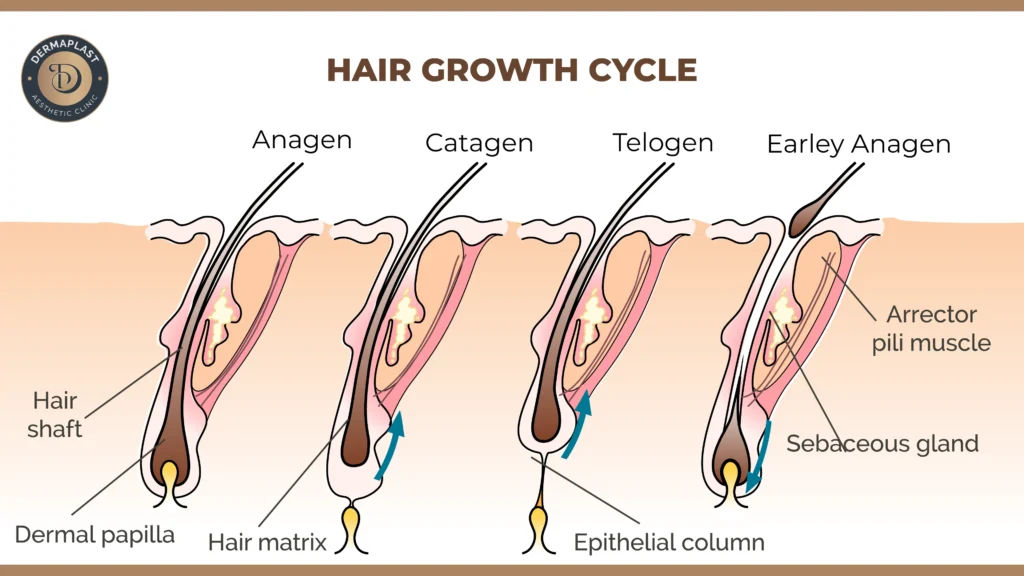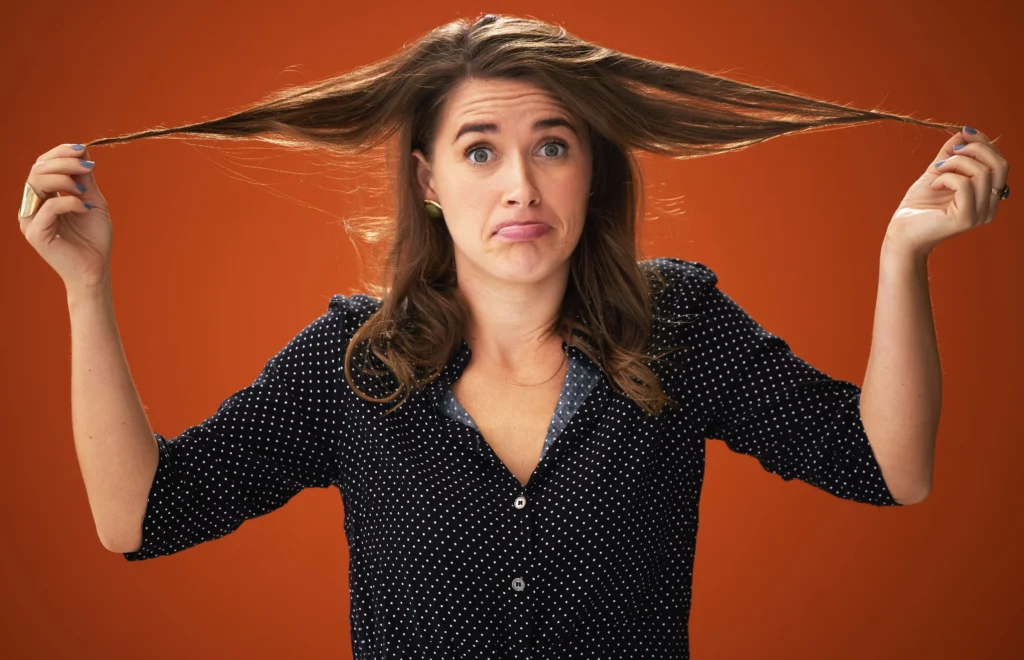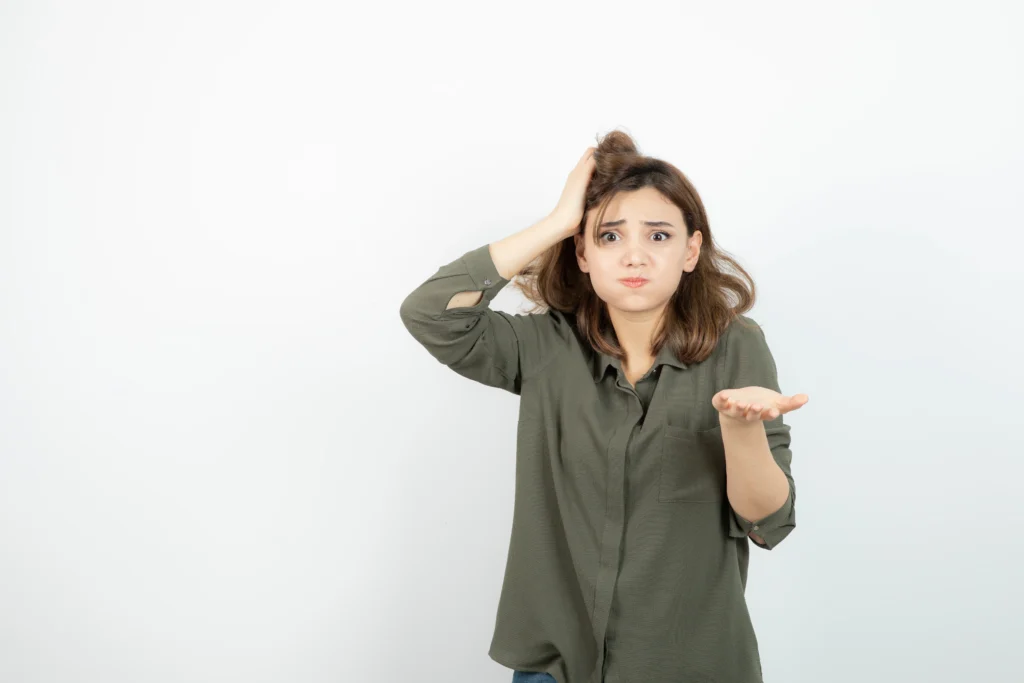Concerned about the hair you find in your shower drain? Understanding what constitutes normal hair loss in shower is crucial. By distinguishing between typical shedding and potential signs of underlying hair health issues, you can better care for your hair.
Stay informed to recognize when it might be time to seek professional advice. Learn more about the nuances of normal hair loss in shower to maintain a healthy relationship with your locks.
Understanding Hair Growth Cycles

1. Anagen Phase
The hair growth cycle consists of three main phases, starting with the anagen phase, also known as the growth phase. During this phase, hair follicles are actively producing new hair cells, leading to visible hair growth. This phase typically lasts anywhere from two to seven years, depending on genetic factors and overall health.
Hair grows approximately half an inch per month during the anagen phase. The duration of this phase determines the length that each strand of hair can reach before shedding occurs. Factors like age, genetics, and overall health can influence the length of the anagen phase.
During the anagen phase, around 85-90% of the hairs on your scalp are actively growing. This is when you see significant changes in hair length and volume due to continuous cell division in the hair follicles.
2. Catagen Phase
Following the anagen phase is the catagen or transition phase. This intermediate stage signals a slowdown in hair growth as the follicle shrinks and detaches from the blood supply. The catagen phase is relatively short, lasting for about two to three weeks.
As the catagen phase progresses, cell division ceases within the hair follicle, leading to structural changes that prepare it for shedding. It’s a crucial period where old hairs make way for new ones by detaching from their nutrient supply and entering a restful state.
In this transitional stage, only about 1% of your hair is in the catagen phase at any given time. While it may seem like little activity is happening during this period, it sets the stage for what follows in the subsequent phases.
3. Telogen Phase
The final stage of the hair growth cycle is known as the telogen or resting phase. During this period, which lasts around three to four months, hairs are fully mature but not actively growing. Instead, they remain attached to the follicle while new hairs start forming beneath them.
Around 10-15% of your hair is typically in the telogen or resting phase at any given time. Shedding occurs more frequently during this period as old hairs are pushed out by new ones entering into the anagen or growth phase.
The telogen phase plays a crucial role in maintaining a healthy balance between the shedding and regrowth of hair on your scalp. Understanding these phases helps explain why individuals experience varying degrees of hair loss during different times of their lives.
What Does Normal Hair Loss Look Like?

Daily Shedding
Normal hair loss refers to the shedding of 50-100 hairs per day, which is considered within the regular range. Hair naturally goes through cycles of growth and shedding, with new hair replacing the old ones continuously.
Hair follicles have a life cycle consisting of three phases: anagen (growth), catagen (transitional), and telogen (resting). During the telogen phase, hair is released and falls out, making room for new hair growth. This shedding process ensures that your scalp remains healthy and allows for new strands to replace the old ones.
Hair loss during a shower can be particularly noticeable due to the water helping to dislodge loose hairs. The warm water and massaging action of shampooing can accelerate the shedding process, causing more normal hair to fall out in clumps. This phenomenon may give the impression of excessive hair loss, but it is often just a result of accumulated shed hairs finally detaching from the scalp.
Factors Influencing Shower Shedding
Several factors can influence why you might notice more hair falling out during a shower. One common reason is that wet hair appears thinner, making any shedding more apparent. When you wash your hair, you are actively manipulating it, which can dislodge hairs that are already in the telogen phase.
Another factor contributing to increased hair loss during showers could be related to how frequently you wash your hair. Washing too infrequently can lead to a buildup of shed hairs on your scalp, which are then more likely to come out in larger quantities when you do finally wash your hair.
Shower temperature and water pressure can also play a role in hair loss during showers. Hot water can weaken the hair shaft, making it more prone to breakage and fall out easily. Similarly, high water pressure can create stress on the scalp and hair follicles, potentially leading to more significant shedding.
Managing Normal Hair Loss
To manage normal hair loss, it’s essential to maintain a healthy scalp environment by following a balanced diet rich in vitamins and minerals that support hair growth. Avoiding harsh chemical treatments and minimizing heat styling tools can also help reduce unnecessary stress on your hair.
Regularly washing your hair with a gentle shampoo and conditioner suitable for your hair type can help keep your scalp clean and promote healthy hair growth cycles. If you notice sudden or excessive hair loss, it’s advisable to consult with a dermatologist or trichologist to rule out any underlying medical conditions contributing to the issue.
Factors That Influence Hair Shedding

Seasonal Changes
Seasonal changes can play a significant role in normal shedding. During fall and spring, many people experience increased hair loss due to the body’s response to changing temperatures. This shedding is usually temporary and should not be a cause for concern.
individuals may notice more hair loss during specific times of the year compared to others. For example, fall is a common time for increased shedding, known as seasonal shedding. This occurs as the body adjusts to the change in temperature and daylight hours.
The transition from summer to fall can trigger an increase in hair shedding, which typically peaks around September or October. This shedding is often a result of the body’s attempt to regulate its temperature and adapt to environmental changes.
Stress Impact
High levels of stress can also contribute to normal hair loss, affecting hormone levels that regulate hair growth cycles. When stressed, the body produces cortisol, which can disrupt normal hair growth patterns and lead to increased shedding.
Stress-induced hair loss is a common occurrence among individuals facing high-pressure situations or prolonged periods of anxiety. Managing stress through relaxation techniques, exercise, and adequate sleep can help reduce the impact on hair health.
Chronic stress can lead to a condition called telogen effluvium, where a larger number of hairs enter the resting phase simultaneously. This results in excessive shedding after a few months of heightened stress levels.
Dietary Factors
Diet plays a crucial role in maintaining healthy hair growth and minimizing excessive shedding. Nutrient deficiencies, such as iron or protein deficiency, can lead to weakened hair follicles and increased hair loss.
Consuming a balanced diet rich in vitamins (like biotin and Vitamin D), minerals (such as zinc and iron), and proteins can promote healthy hair growth while reducing shedding. Including foods like eggs, nuts, leafy greens, and fish in your diet can provide essential nutrients for strong and vibrant hair.
Certain dietary habits like crash dieting or extreme calorie restriction can deprive the body of essential nutrients required for healthy hair growth. Maintaining a well-rounded diet that supports overall health is crucial for minimizing excessive shedding.
When Should You Be Concerned?

Signs of Abnormal Hair Loss
Noticeable clumps of hair in the shower drain or on your pillow could indicate abnormal hair loss. This is particularly concerning if you start to see patches of baldness or significant thinning on your scalp. If you find yourself constantly clearing out clogged drains due to excessive hair loss, it might be time to seek medical advice.
Experiencing sudden and unexplained hair loss can also be a cause for concern. Hair shedding that disrupts your daily routine or causes emotional distress may signify an underlying issue. In such cases, it’s important to consult a healthcare professional to determine the root cause and explore potential treatment options.
If you have a family history of pattern baldness, also known as androgenetic alopecia, keep an eye out for any early signs. While some degree of hair loss is expected with this condition, rapid or severe thinning might warrant further investigation. Understanding your genetic predisposition can help you gauge when your hair loss becomes abnormal.
Conditions Leading to Excessive Hair Loss
Alopecia areata, an autoimmune disorder that causes hair loss in patches, can lead to sudden and unpredictable shedding. This condition occurs when the immune system mistakenly attacks hair follicles, resulting in hair fall. Individuals with alopecia areata may notice coin-sized bald spots on their scalp or other areas of the body.
Another common condition associated with excessive hair shedding is telogen effluvium. This temporary form of hair loss often occurs after a stressful event like childbirth, surgery, or extreme weight loss. During telogen effluvium, a larger number of hairs enter the resting phase simultaneously, leading to increased shedding over several months.
In some cases, nutritional deficiencies, such as low iron levels or inadequate protein intake, can contribute to abnormal hair loss. Ensuring a balanced diet rich in essential vitamins and minerals is crucial for maintaining healthy hair growth. If you suspect nutrient deficiencies may be impacting your hair health, consider consulting with a healthcare provider or a nutritionist for personalized guidance.
Preventing Excessive Hair Loss

Proper Nutrition
Consuming a balanced diet rich in essential nutrients like vitamins A, C, D, and E can promote healthy hair growth. Foods such as spinach, eggs, nuts, and salmon are beneficial for maintaining strong and vibrant hair strands. Ensuring adequate protein intake is crucial for preventing hair thinning.
Hair follicles require proper nourishment to thrive, so incorporating foods high in omega-3 fatty acids and biotin can contribute to overall hair health. Staying hydrated by drinking plenty of water is essential for maintaining thick and lustrous hair. Avoid crash diets or extreme restrictions that can lead to nutrient deficiencies and subsequent hair fall.
Adequate intake of iron-rich foods like lean meats, legumes, and leafy greens can prevent excessive shedding due to iron deficiency anemia. Iron plays a vital role in carrying oxygen to the hair follicles, promoting healthy growth, and minimizing the risk of bald spots.
Proper Hair Care Routine
Choosing the right hair products suitable for your specific hair type is crucial in preventing excessive hair loss. Opt for gentle shampoos free from harsh chemicals that can strip the scalp of its natural oils. Using a moisturizing conditioner regularly can help keep the hair hydrated and less prone to breakage.
When styling your hair, be mindful of using heat protectant sprays before using hot tools like straighteners or curling irons. Excessive heat exposure can weaken the hair shaft, leading to increased breakage and thinning over time. Embracing hairstyles that minimize tension on the scalp, such as loose braids or buns, can also reduce the risk of permanent hair loss.
Regularly trimming your hair every 6-8 weeks helps prevent split ends from traveling up the hair shaft, causing further damage and breakage. Avoid over-brushing or vigorous towel-drying, as these practices can stress the hair strands and contribute to excessive shedding.
Seeking Professional Advice
If you notice persistent or sudden changes in your hair texture or volume despite following a healthy diet and proper care routine, it may be time to consult a healthcare professional or dermatologist specializing in hair concerns like Dermaplast Skin, Laser & Hair Clinic.
Consulting a professional can help identify underlying issues such as hormonal imbalances, thyroid disorders, or alopecia that may be contributing to excessive shedding. A dermatologist can perform diagnostic tests like blood work or scalp examinations to determine the root cause of your hair loss and recommend appropriate treatment options.
Conclusion
In summary, experiencing normal hair loss in shower is a typically normal phenomenon that reflects the natural cycle of hair growth and shedding. Normal daily shedding is about 50-100 hairs, which might become more noticeable during a shower due to the mechanics of washing and styling.
However, if you encounter substantial clumps of hair falling out or notice significant thinning or bald patches, it may be time to consult a professional. Factors like diet, stress, and proper hair care play crucial roles in maintaining hair health.
By understanding these factors and the phases of the hair growth cycle, you can better manage your hair’s needs and recognize when hair loss in the shower might be more than just a natural process. Remember, keeping an informed perspective on what constitutes normal hair loss in shower will help you nurture a healthy relationship with your locks.
Frequently Asked Questions
What are the common causes of normal hair loss in shower?
Normal hair loss in shower is primarily caused by the natural shedding process as part of the hair growth cycle. Factors like stress, hormonal changes, and nutritional deficiencies can also contribute to this phenomenon.
How much hair loss in the shower is considered normal?
Losing around 50-100 hairs per day is generally considered normal for most individuals. However, this number can vary depending on factors like age, genetics, and overall health.
Can excessive hair washing lead to more hair loss in the shower?
Frequent washing can strip the scalp of its natural oils, potentially weakening the hair follicles over time. This may result in increased hair shedding during showers or while brushing.





